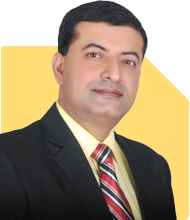I am 45 years old, with the following family corpus (wife and I jointly) - MF (International, Hybrid, Large Cap and Small Cap) - 2.5 Cr, PF - 40L, EPF - 1.3 Cr, NPS - 2.3 Cr, US 401k - 40K USD, stocks - 90L, Tax Free Bonds - 40 L, Real Estate Investment other than own home - 2.5 Cr, we wish to retire immediately and need approximately 2 lakh per month as living expenses, besides we need about 1 crore for child's college in 10 years, school expenses have been put in an FD (inflation adjusted) which is outside above calculations. Can we retire?
Ans: Given your family’s current corpus, let's assess your retirement readiness and the feasibility of generating an income of Rs 2 lakh per month along with a college fund for your child.
1. Evaluating Your Current Financial Position
Your current corpus is spread across multiple asset classes:
Mutual Funds (International, Hybrid, Large Cap, Small Cap): Rs 2.5 Cr
Provident Fund (PF): Rs 40 L
Employee Provident Fund (EPF): Rs 1.3 Cr
National Pension Scheme (NPS): Rs 2.3 Cr
US 401k: 40,000 USD (approx. Rs 33 L assuming current exchange rates)
Stocks: Rs 90 L
Tax-Free Bonds: Rs 40 L
Real Estate Investment: Rs 2.5 Cr (excluding your primary residence)
Total Corpus: Approximately Rs 10 Cr
This well-diversified portfolio offers growth, stability, and tax-efficient options. Your investment strategy should continue to leverage these strengths while adjusting for retirement.
2. Monthly Income Needs and Withdrawal Strategy
Based on your goal of Rs 2 lakh in monthly living expenses, let's outline a sustainable withdrawal plan:
Target Monthly Income: Rs 2 lakh
Inflation-Adjusted Growth: Over a 25- to 30-year retirement, your expenses will rise. This requires a portfolio that grows beyond inflation.
Safe Withdrawal Rate: A conservative withdrawal rate of 3-4% annually on Rs 10 Cr allows you to meet expenses while preserving capital.
A blend of income-generating assets like tax-free bonds, dividend-yielding stocks, and a systematic withdrawal plan from mutual funds should provide the required monthly income with minimal depletion of your principal.
3. Generating Regular Monthly Income
To ensure a steady flow of income, a diversified income plan is essential:
Tax-Free Bonds: Rs 40 L in tax-free bonds can generate a steady, tax-free interest. This provides a reliable portion of your monthly income.
Dividend-Paying Stocks and Mutual Funds: Stocks worth Rs 90 L in dividend-paying companies can be reallocated to stable, high-dividend stocks, which provide both income and capital growth.
Systematic Withdrawal Plan (SWP) in Mutual Funds: Utilizing Rs 2.5 Cr in mutual funds through an SWP can ensure consistent income while still allowing capital appreciation.
Combining income from these sources will effectively cover your monthly needs without excessive reliance on a single asset class.
4. Children’s Higher Education Fund Planning
Your goal of Rs 1 Cr in 10 years for your child’s college is achievable through structured investments:
NPS for Long-Term Growth: Your NPS of Rs 2.3 Cr, with its balanced equity-debt structure, will grow tax-efficiently, providing funds at retirement while ensuring sufficient liquidity.
US 401k and International Exposure: The US 401k (Rs 33 L) will also appreciate, given international growth potential. Retaining this in its existing form provides valuable geographical diversification.
Dedicated Education Portfolio: Allocate a portion of your mutual funds, either in conservative equity or hybrid funds, specifically towards the education corpus. Ten years allow this corpus to grow with minimal risk while meeting the Rs 1 Cr target.
5. Risk Management and Liquidity Needs
To retire comfortably and manage risks:
Emergency Fund: Set aside an emergency fund in a liquid instrument, covering at least 12 months of expenses (Rs 24 L). This ensures that unexpected costs do not disrupt your investment plan.
Health Insurance: Ensure comprehensive health insurance coverage for you and your family. Rising healthcare costs can erode your corpus, so a robust insurance plan is essential.
Risk Management Through Debt Allocation: Increasing your allocation to fixed-income instruments (tax-free bonds, short-term debt funds) as retirement progresses will stabilize your portfolio against market volatility.
6. Minimising Tax Impact
Your portfolio is subject to multiple tax categories, so an efficient tax plan can enhance returns:
Equity Mutual Funds and Stocks: When selling, remember that long-term capital gains (LTCG) above Rs 1.25 lakh are taxed at 12.5%. Short-term gains (STCG) are taxed at 20%. For tax efficiency, carefully time your withdrawals and use your annual tax-free allowance.
Debt Instruments: Tax-free bonds, NPS, and provident funds remain highly tax-efficient. However, gains from debt funds will be taxed according to your income slab. This structured approach will reduce tax outflow, allowing more funds for expenses and growth.
7. Investment Growth Strategy for Wealth Preservation
While covering your monthly needs is the priority, growing your corpus against inflation is equally crucial. Here’s how to manage this:
Hybrid Funds: Maintain a portion of your mutual funds in hybrid funds, which balance growth and stability.
Equity Exposure: Retain a controlled equity exposure, particularly in growth-oriented sectors, ensuring long-term appreciation to counter inflation.
Regular Rebalancing: Review and rebalance your portfolio annually to ensure an optimal mix of equity and debt. This will align your portfolio with your risk profile and goals over time.
8. Final Insights
With a well-structured retirement income plan, your corpus should comfortably support a monthly withdrawal of Rs 2 lakh while preserving capital. Strategic planning for your child’s education corpus, combined with an inflation-adjusted portfolio, will enable sustainable and efficient retirement living.
Your diversified assets and structured income sources set a strong foundation for your immediate retirement. A Certified Financial Planner can assist in optimizing this plan further, with rebalancing, tax strategies, and ongoing advice as your needs evolve.
Best Regards,
K. Ramalingam, MBA, CFP,
Chief Financial Planner
www.holisticinvestment.in
https://www.youtube.com/@HolisticInvestment























